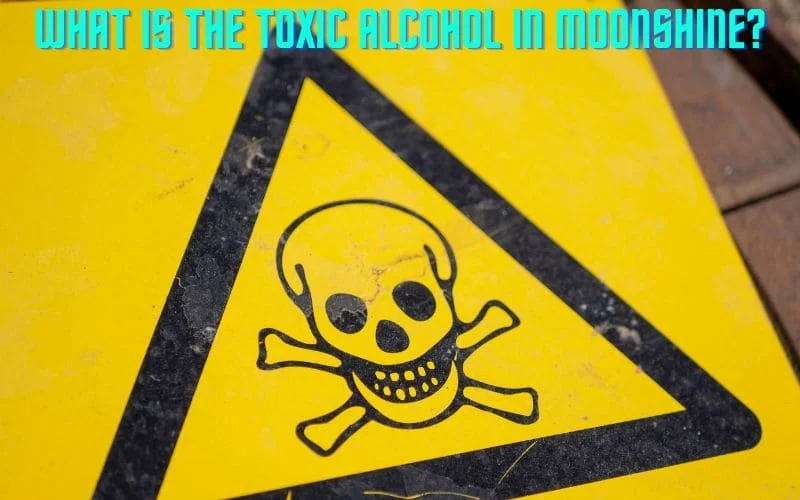What is The Toxic Alcohol in Moonshine? Serious Danger Tips!

Introduction
Welcome to the world of moonshine, where tradition meets innovation, and history melds with modernity. In this insightful article, we’ll delve into the intriguing realm of moonshine and explore the complexities of toxic alcohol present in moonshine. From understanding its production to unraveling the health risks associated with consumption, join us on a journey to discover all about toxic alcohol in moonshine.
What is Toxic Alcohol in Moonshine?
Understanding Moonshine
Moonshine, also known as white lightning, mountain dew, or hooch, is a high-proof distilled spirit crafted outside of legal regulations. Its origins trace back to the Prohibition era, where bootleggers produced alcohol in secret to evade the law. Today, moonshine has taken on a cultural significance, embodying artisanal craftsmanship and historical allure.
- Traditional Moonshine Ingredients
- Production Process of Moonshine
- Historical Significance of Moonshine
The Dangers of Toxic Alcohol
Toxic alcohol in moonshine poses severe health risks due to its chemical composition, especially when it contains methanol, a substance that can be toxic to the human body. The illicit production of moonshine often leads to inadequate distillation, resulting in the presence of toxic alcohols, endangering the consumers who unknowingly ingest these hazardous concoctions.
- Health Risks of Toxic Alcohol in Moonshine
- Chemical Composition and Effects on the Human Body
- Consequences of Inadequate Distillation in Illicit Production
It is crucial to be aware of the specific health risks associated with toxic alcohol in moonshine, as well as the impact of inadequate distillation on its composition. Understanding these dangers is essential for preventing harmful health effects and promoting safe consumption practices.
How Toxic Alcohol is Produced in Moonshine
Toxic alcohol is produced in moonshine through improper distillation techniques and contamination during the fermentation process. When moonshine is distilled in unregulated and non-standardized settings, there is a heightened risk of toxic alcohol accumulation, leading to potential health hazards for consumers.
How to Identify Toxic Alcohol in Moonshine
Physical Characteristics of Toxic Alcohol
Identifying toxic alcohol in moonshine can be challenging, as it often lacks distinct visual cues. However, cloudy or hazy appearances, unusual sediments, or atypical colorations may indicate the presence of toxic components, warranting caution and further examination.
- Cloudy or hazy appearances
- Unusual sediments
- Atypical colorations
Chemical Testing for Toxic Alcohol
Chemical testing, such as gas chromatography, can accurately detect the presence of toxic alcohols like methanol and ethanol in moonshine. These specialized analyses provide quantitative data on the alcohol’s composition, enabling the identification of hazardous substances and ensuring consumer safety.
- Gas chromatography: This method separates and analyzes compounds to accurately identify the presence and concentration of toxic alcohols in moonshine. It is highly sensitive and widely used in forensic and industrial settings.
- Spectrophotometry: This technique measures the amount of light absorbed by the toxic alcohols to determine their concentrations. It is a reliable and widely accepted method for alcohol analysis.
- Mass spectrometry: By ionizing and separating compounds based on their mass-to-charge ratio, mass spectrometry can precisely identify and quantify toxic alcohols in moonshine, making it a crucial tool in alcohol analysis.
Signs and Symptoms of Toxic Alcohol Consumption
Consumption of toxic alcohol in moonshine can lead to various alarming signs and symptoms that should not be ignored. These signs include:
- Nausea
- Vomiting
- Dizziness
- Blindness, especially in severe cases
- Organ failure, which can have life-threatening consequences
It is important to understand that the effects of toxic alcohol consumption can range from mild discomfort to severe health complications. Recognizing these signs early is crucial for seeking immediate medical attention and preventing further harm.
Health Risks of Consuming Toxic Alcohol in Moonshine
Short-Term Health Effects
- Nausea
- Vomiting
- Headache
- Dizziness
Short-term health effects of consuming toxic alcohol in moonshine include nausea, vomiting, headache, and dizziness. These symptoms can manifest shortly after ingestion and require prompt medical intervention to mitigate their impact on the body. In addition to these common symptoms, individuals may also experience:
- Blurred vision
- Confusion
- Slurred speech
- Difficulty breathing
- Increased heart rate
- Seizures
Long-Term Health Effects
Long-term consumption of toxic alcohol in moonshine can lead to chronic health issues such as liver damage, neurological disorders, and vision impairment. Prolonged exposure to toxic alcohols poses significant risks to overall health and well-being, necessitating preventive measures and medical care.
Treatment for Toxic Alcohol Poisoning
When it comes to managing toxic alcohol poisoning, prompt and effective treatment is crucial to minimize health risks. The treatment approach involves a combination of supportive care, antidote administration, and medical monitoring to address the adverse effects of toxic alcohol consumption. Let’s delve into the details of each component:
- Supportive Care: Patients with toxic alcohol poisoning may require supportive measures to stabilize their condition. This includes providing respiratory support, maintaining hydration, and managing electrolyte imbalances.
- Antidote Administration: Certain antidotes, such as fomepizole and ethanol, are administered to inhibit the metabolism of toxic alcohols and prevent further toxic byproduct formation in the body.
- Medical Monitoring: Continuous medical monitoring is essential to assess the patient’s vital signs, screen for complications, and evaluate the effectiveness of the treatment protocol. Close observation is necessary to anticipate and manage potential complications.
Additionally, in cases of severe toxicity, hemodialysis may be employed to enhance the elimination of toxic alcohols from the bloodstream. Collaborative efforts between healthcare professionals, including toxicology specialists and critical care teams, are integral to providing comprehensive care for individuals affected by toxic alcohol poisoning.
Conclusion
As we conclude our exploration of toxic alcohol in moonshine, it is evident that awareness and understanding of its risks are paramount in safeguarding consumer well-being. By recognizing the dangers, identifying toxic components, and prioritizing health-conscious consumption, individuals can make informed choices and promote safe practices within the moonshine culture. Let’s continue to shed light on the significance of quality and safety in the world of moonshine, ensuring an enriching and enjoyable experience for all enthusiasts.
